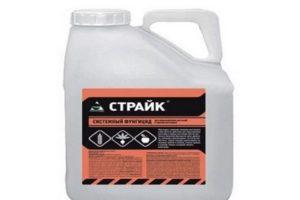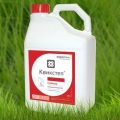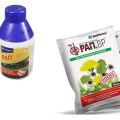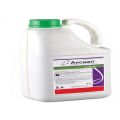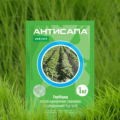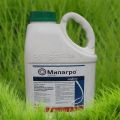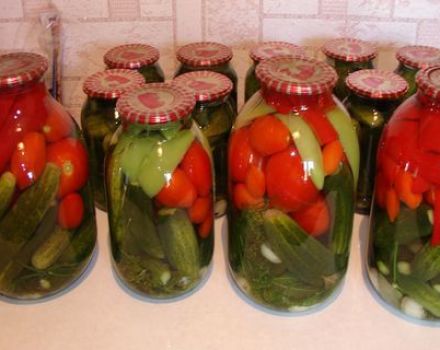Instructions for the use of herbicide Lancelot 450, mechanism of action and consumption rates
The herbicide, designed for the treatment of areas occupied by cereals, effectively copes with many dicotyledonous weeds. It has a toxic effect in direct contact with the plant, gives a quick and long-lasting result. After treatment with the herbicide Lancelot 450, weed suppression is noted within a day.
Content
- 1 Composition, purpose and form of drug release
- 2 The principle of operation of the herbicide Lancelot
- 3 Advantages and disadvantages
- 4 Weed control rates
- 5 How to prepare and use a working mixture?
- 6 Safety in application
- 7 Toxicity and compatibility of the agent
- 8 Conditions and terms of storage of the herbicide
- 9 Similar drugs
Composition, purpose and form of drug release
The herbicide Lancelot is intended for the treatment of areas occupied by ear-bearing cereals. It is effective against a variety of weed dicotyledons, including the malicious ones - sow thistle, thistle, thistle, bedstraw. With the help of a herbicide, a sowing area is prepared for the following species in the crop rotation.
Lancelot includes two active compounds:
- aminopyralide - 300 g / l;
- florasulam - 150 g / l.
Lancelot 450 is available in granular form. The solution is an aqueous dispersion. The volume of the canister is 0.5 kg / 10 × 0.5 kg. The manufacturer is the American company DOW AgroSciences.
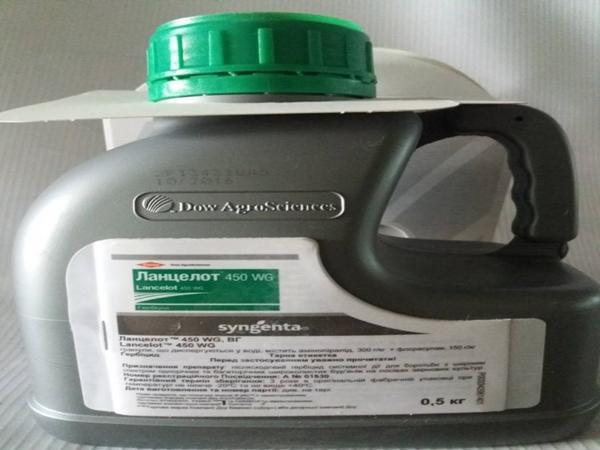
The principle of operation of the herbicide Lancelot
The active components penetrate into plant tissues through the leaf surface and enter the meristem. There, hormonal synthesis is inhibited, the result is a failure of cell division. Thanks to the combination of two components, Lancelot copes with weeds that are immune to the effects of sulfonylurea and dichlorophenoxyacetic acid, and does not allow the manifestation of resistance.
The herbicidal action is fast. Growth processes stop after a day. And the complete death of weeds is noted after 2 weeks.
After applying the herbicide, strict adherence to crop rotation is required. The following are grown on the treated area:
- cereals, corn - a month later;
- winter and forage grains, winter rape - in the fall of the same season;
- spring cereals, rapeseed, corn - in the spring of the next season;
- potatoes, flax, sunflowers, beets, cabbage, onions - a year later, subject to rainfall from 300 mm;
- forage and food beans, carrots - after 1.5 years.

Advantages and disadvantages
Lancelot 450 is one of the most widely used herbicides. Its popularity is due to its many advantages:
- the ability to destroy both green and root parts of weeds;
- high efficiency against weeds resistant to sulfonylureas and imidazolinones;
- the ability to kill the most vicious weeds - thistle, chamomile, thistle, ragweed, bedstraw;
- the possibility of application up to the stage of the second internode in a cultivated species;
- economic optimization of crop rotation.
Farmers do not name any particular disadvantages. One can only note the ineffectiveness of using the herbicide on waterlogged soil, the inadmissibility of aerial spraying.

Weed control rates
The dosage is as follows:
| consumption rate | culture | weed species | spraying period | multiplicity |
| 0,03-0,033 0.03-0.033 (A) | spring and winter cereals | dicotyledonous annuals and perennials | from the tillering stage to the appearance of the second internode in a cultivated species | 60 (1) |
How to prepare and use a working mixture?
The solution is made before use. Shake the canister thoroughly before opening. The spray device tank is filled one third with water. Add a measured amount of the drug. Add water to the edge of the tank while continuously stirring with a mechanical stirrer. The solution is prepared at a filling site, which is then cleaned.
Processing is carried out by spraying, at an air temperature of +10 to +25 ° C. The herbicide is insensitive to moisture, its effectiveness does not decrease if it rains an hour after treatment. But do not spray if a cold snap is expected. Crops weakened by disease or unfavorable weather conditions should not be treated.
Liquid consumption - 200-300 liters per hectare.
Safety in application
Herbicide Lancelot 450 is a moderately toxic substance for humans. Therefore, it is necessary to work with it using standard protective equipment for the skin, visual and respiratory organs: work clothes, rubber gloves, and a respirator.

Toxicity and compatibility of the agent
Toxicity class for humans - 3. For insects - 3.
In order not to harm the bees, the following rules should be observed:
- processing at wind speed up to 5 m / s;
- border area of flight of bees - from 3 km;
- flight ban - from 3 hours.
The herbicide is toxic to fish. It is forbidden to use it in the sanitary zone of reservoirs belonging to fishery farms.
Lancelot 450 is effective when combined with Axial, if you need to treat areas infested with dicotyledonous and cereal species. Also compatible with most herbicides, fungicides, insecticides, water-soluble mineral complexes.

Conditions and terms of storage of the herbicide
Lancelot is stored in a non-damp, ventilated room in the canister in which it was purchased. There should be no feed, fertilizers, water sources, food products nearby. Storage temperature -20 to +40 ° C.
The shelf life is 3 years.
Similar drugs
Herbicides based on a combination of aminopyralide and florasulam are available from many manufacturers. The most common brands:
- Dragon;
- Taltos;
- Intensity;
- Derby Super.
DOW AgroSciences markets chemicals that supplement the aminopyralide-florasulam complex with other ingredients:
- Mustang Forte - 2.4-D;
- Lancet Plus, Genius, Hurricane - Piroxulam.

In Russia, the popularity of the drug Lancelot is growing. It is due to its effectiveness against most common weeds, safety when properly prepared and used.
